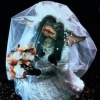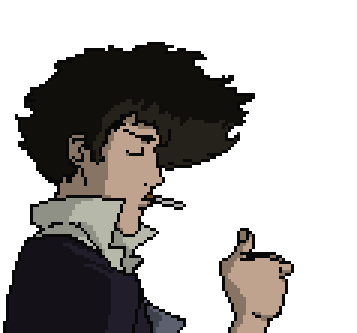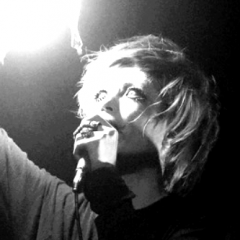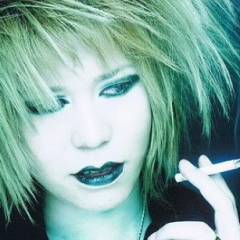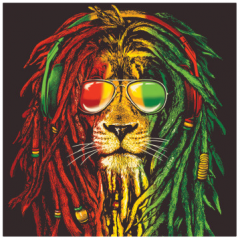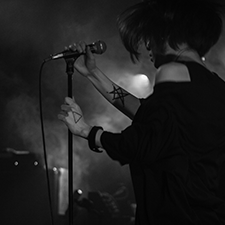-
Content Count
251 -
Joined
-
Last visited
Reputation Activity
-
 whitegrey reacted to CAT5 in CAT's Top 30 Favorite Songs of 2016!
whitegrey reacted to CAT5 in CAT's Top 30 Favorite Songs of 2016!
Greetings, monochromians and netizens at large! Here are my Top 30 Favorite Songs of 2016! Every year, there are tons of amazing songs released that, while not belonging to my fav. albums of the year, still heavily impact my musical experience. So for once, I wanted to highlight these songs! Unlike my AOTY list, every song here is Japanese. I also chose not to include songs by artists that made my AOTY list.
As I mentioned in my AOTY thread, I usually never bother ranking lists, but I wanted to give it a shot this year for fun. These rankings are super erroneous, though, as I could prefer any of these songs over another on any given day. XD So...yeah, don't read too much into the actual ranks, ahaha.
As always this, list isn't meant to be taken objectively. If you have any thoughts, please feel free to share! And if you're curious about any of the songs, please do check out the short sample clips I've created!
Shall we begin?
30
"UNDYING" by the GazettE
the GazettE's 'Dark Age' has been...same-y to say the least, but "UNDYING" has stood out as one of my favorite songs from this era - probably because it sounds like a mess, with the band trying their hardest to be progressive. It's an enjoyable mess, though, and as usual, it never takes much for Ruki an co. to win me over.
29
"KEIREN" by qujaku
THE NOVEMBERS have been on a mild decline since 2014's Rhapsody in Beauty, and qujaku are slowly creeping in to capitalize on all of that lost potential. the loud, pummeling art-punk of "KEIREN" is captivating, and I can't wait until this band releases a proper debut!
28
"matsuo basho" by suiyoubi no campanella
suiyoubi gave me a scare with the release of UMA, wherein the group's characteristic sound was subverted by incorporating several different producers, but they quickly followed up with "matsuo basho", reviving my hopes in the process. As long as Hidefumi remains the sole producer, I doubt they can go wrong.
27
"2772" by ZA FEEDO
Experimental pop outfit ZA FEEDO has a plethora of talent and potential, but unfortunately, they've yet to truly find their sound. The groovy and soulful "2772", however, is a fantastic indicator of where they should focus their efforts!
26
"gods" by mothercoat
Sadly, mothercoat released only this single last year, but it's the band doing what they do best. Quirky, upbeat indie-rock that's both buoyant and super infectious!
25
"gourmet kikou" by fujin club
Organic pop with bright melodies and crisp, colorful instrumentation = instant love from me! I like to imagine this song as the musical equivalent to a Ghibli movie. It's cozy, endearing, pure, and full of wonder!
24
"sayanora anata" by ayano kaneko
Young indie singer-songwriter ayano kaneko made an instant fan out of me with this one. "sayonara anata" is the perfect blend of carefree indie-pop and adorably earnest folk-rock.
23
"LAST HERO" by BLUE ENCOUNT
BLUE ENCOUNT are amongst the kind of major-label rock bands in Japan that I don't typically gravitate towards (stuff like ONE OK ROCK, KANA-BOON, KEYTALK), but I'd be damned if "LAST HERO" isn't one of the most catchy and fun tracks that I've heard in 2016. That and, I blame @benifor bringing my tastes full circle and getting me to appreciate the poppier side of life again.
22
"Sunshine Freeway" by I love you Orchestra
In spite of their brilliant line-up, I love you Orchestra has yet to truly strike a chord with me, as I found their work a bit too erratic and unfocused, but with "Sunshine Freeway", the band has found a great balance between their spastic tendencies and accessibility; making this a coherent and easily memorable track.
21
"wither mind" by girugamesh
I'm only familiar with girugamesh's material from about 2013 and on (shout out to @togz for actually getting me to listen to them), so while I can't compare their early works to their recent stuff, I've come to enjoy the synth-laden alt. metal that seems to be characteristic of their final days. "wither mind" sums this sound up perfectly, and it was the highlight of their farewell mini-album for me.
20
"tabun, kaze." by sakanaction
This is your average sakanaction song: danceable, synth-driven rock with big, sing-a-long choruses - and thankfully, 'average' for sakanacation means that's it's frikkin' great! It's been about 4 years since their last original album, and I'm practically salivating for more!
19
"short hope" by akai ko-en
As bright and talented as the girls in akai ko-en are, their music has been hit-or-miss in my book - a sentiment that became especially true for me after they went from inventive indie-upstarts to a full blown Jpop band, seemingly overnight. They definitely get things right on "short hope", though, showcasing a kind of hip and smooth, r&b-esque side that I've yet to hear from them. Not to mention, I'm in love with Chiaki I'm in love with Chiaki's vocals! ^_^;;;
18
"voice" by SOSO BREAK THE WALL
I'm still thanking @Hakoniwafor indirectly introducing me to this band, as I most certainly would not have heard it about them otherwise. "voice" is the kind of dark, mournful female-fronted alt-rock that I've been craving since me-al art's third album and the demise of REDЯUM. SOSO released a solid EP last year, but I need MORE!
17
"Talisman" by Boris
Forbidden Songs, the 2nd disc from Boris's reissue of 2006's Pink, is comprised entirely of unreleased songs, and it could have easily been released as a brand new album on its own. The songs are just that good. "Talisman" is an absolutely crushing stoner-doom number that harkens back to 2002's Heavy Rocks, but is equally apt as an extension of Pink.
16
"The UNreal" by Silhouette from the Skylit
I've been casually following this band for a few years now, and while they're consistently solid, every now and then, they put out a song that really sticks with me. "The UNreal" is a charging tune done in their usual electro alt-rock fashion, and it's both funky and commanding.
15
"yotaka" by kiryu
I'm super new to Kiryu, as I've only heard their material from 2015 and on, but they've been one of my favorite VK discoveries of recent times. Admittedly, I wasn't too impressed by their full length last year, but I loved the entire single for "irodori". "yotaka" was the first b-side for this single and its frantic, cacophonous mix of metal, traditional Japanese motifs, and VK melodrama is everything I've come to love about Kiryu!
14
"kami-iro awase" by binaria
2016 has been a busy year for Annabel. Not only has she continually wowed me with her work in siraph, but she also released a solo EP in addition to cranking out both a single and an album with binaria. I actually consider binaria to be somewhat of an anison supergroup, with both Annabel and the renown Nagi Yanagi on vocals. I like to imagine that they're this generation's Maaya Sakamoto and Akino Arai, respectively. "kami-iro awase" serves as the OP for an anime called "Danganronpa 3", and it's a brilliantly penned track with subtly ingenious instrumentation - very similar to some of school food punishment's material.
13
"EDGE" by nowisee
Speaking of anison, nowisee (pronounced "noise") is a rather enigmatic audio-visual project that specializes in creating songs with their own, unique animations, so it surprises me that they've yet to actually do a song for anime. They've been highly prolific over the past 2 years, but the recently released "EDGE" has become favorite track from their rapidly expanding catalog. It's an electronically infused pop-rock power-ballad, with graceful verses and a monumental chorus. And yes, I fully accept my inner-weeb. ; )
12
"Shandy" by TK from ling tosite sigure
TK has been a flat-out disappointment these past few years, so it should come as no surprise that the best song he released last year is actually a re-recording of a classic ling tosite sigure song from 2010 - back when he was at the top of his game. Surprisingly, TK hasn't altered the original too much, and he hasn't watered it down either. Instead, it's a more organic version that faithfully captures the same epic intensity of the original. Hopefully, TK will begin to take a few more cues from his past.
11
"Mother Fucker" by Limited Express (has gone?)
It's so refreshing to hear these veterans of the Japanese underground still kicking ass after nearly 20 years in the game. Their latest album All Ages was a wild, alt-punk ride that showed the band is still as vital and crazy as ever. "Mother Fucker" stuck with me in particular, but it's emblematic of the entire album: turbulent drums, chaotic sax, groovy post-punk basslines, erratic riffs, and YUKARI’s ear-piercing vocals! It’s noisy, it’s bonkers, and it’s a hell of lot of fun!
10
"F.A.K.E." by lynch.
"Listening to a Lynch album all the way through is like the musical equivalent of living on macaroni for an entire week." said one @Disposable some time ago, ahaha. I'll never forget that line. I agree with him, but I do enjoy lynch. quite a bit. I think it's due to their creative stagnation that I've come to expect at least one major jam from them with each new album. In 2015, it was "EVOKE", and last year gave me "F.A.K.E.". I also have to thank @Flame-Xfor making this song infinitely cooler by using it in his awesome AMV for Gundam IBO. Now I inadvertently associate it as the actual opening theme for that anime, and it's glorious.
09
"lost/stand/alone" by cinema staff
2016 was a great year to be a cinema staff fan. They released a super solid album and an excellent single/EP, both of which showcased their range and continued viability in being both talented rockers and compelling pop songwriters. I thought "lost/stand/alone" was the perfect example of this duality, with its catchy emo riffs, coercive drumming, and Mizuki's bright, soaring vocals. I've yet to hear anyone I've liked better doing this style.
08
"Youth" by Young Juvenile Youth
Young Juvenile Youth, consisting of vocalist Yuki and producer/beatmaker Jemapur, are fairly new, but they already stand out within the greater Jpop landscape. Not exactly trip-hop, and not exactly electro-pop either, "Youth" sports a sound that I can name no contemporaries for in Japan. It's the kind of sleek, minimal electronic music that you'd sooner expect to hear out of London than Tokyo. The synths in "Youth" are meticulously layered and arranged, and the beat is just chill enough to garner a contemplative head-nod. It's also accessible, but not overtly poppy. This duo definitely has my attention, and I'm curious to see where they go in 2017.
07
"shirobara no lullaby" by aoi teshima
Aoi Teshima's image has always been a direct reflection of her music. Her songs exude the same level of elegance, class, and modest beauty that she does, and as such, her most recent album Blue library was expectedly lovely. "shirobara no lullaby" was particularly extravagant. It's a stunningly somber, psych-folk song that harkens back to 70's kayōkyoku ballads and even reminds me a bit of Douji Morita. Exquisite!
06
"I Love You" by Chocolat & Akito
I feel like Chocolat & Akito have gone grossly underrated by the western Jpop fanbase. While most overseas Jpop fans were praising Seiko Oomori for including hints of Shibuya-Kei on her latest album as if she single-handedly revived the genre, Chocolat & Akito -actual vets of the movement- were busy releasing quality music as usual. The married couple's latest venture saw them team up with Californian surf jazz twins The Mattson 2 and the results were lovely. "I love you" was an instant favorite for me, as Chocolat & Akito did a fantastic job of merging their beautiful vocal melodies and their sunny, shibuya-kei flavors with the jazzy psychedelia of The Mattsons.
05
"Nightseeing" by Klan Aileen
I was instantly mesmerized upon watching the original video for this song, and sold even more on this band after hearing the re-recorded version. They left such a big impression that I'd automatically shoehorned them into a spot on my AOTY list without even hearing the album yet. Sadly, the it didn't turn out the way I'd hoped, but "Nightseeing" has a permanent spot on my playlist. It's a riveting, noisy psychedelic-rock track with killer riffs. Hopefully they do more of this style in the future.
04
"M.U.T.E" by PELICAN FANCLUB
According to some fans, OK BALLADE wasn't PELICAN FANCLUB's strongest release, but it was the first one in which any of their songs were able to leave a significant impact on me. "M.U.T.E" has this surprisingly smooth and groovy, western-indie feel to it. I can't really explain why, but it just feels "right", aha. I may not be as devout a fan of these guys as @fitear1590or @seurong, but "M.U.T.E" has provided me with a fantastic incentive to sign up to the "FANCLUB".
03
"Tokyo" by ame no parade
ame no parade has been...highly conflicting for me. Kohei has quickly become one of my favorite vocalists, and I enjoy the band's general sound and aesthetic, but my gosh, their songwriting has been incredibly stagnant - especially after going major in 2016. "Tokyo", however, is one of the best songs they've ever written. It takes on their usual format of minimalistic verses, and big pop choruses, but actually manages to be engaging in the process. Not only that, but the song just has a really amazing vibe to it. I think the PV, where Kohei is openly singing and dancing through the streets of Tokyo on what seems to be a beautiful evening, perfectly sums up how this song feels.
02
"blues" by Galileo Galilei
Galileo Galilei called it quits last year, as they left us with their final album Sea of Darkness. The album wasn't as gloomy as its title suggests, though. In fact, it was full of the light and airy pop-rock that their career was known for. However, the aptly titled "blues" was the most emotionally poignant moment on the album for me. It's an enthralling track with amped-up instrumentation and a passionate vocal performance from Yuuki Ozaki. In a farewell message from the band, they expressed that they put all of their last thoughts into this album, and in this track, you can literally feel the heartache and sorrow that they've experienced on their road to the end.
01
"us" by Aimer
Annnd finally, my number one track! If you've bothered reading this far, then bless you!
I love Aimer's powerful croon, but she's the type of artist whose music quality depends on who she works with. Her vocals are like a hollow reed through which the intent of the producer flows. She's released some amazing tracks alongside the likes of Yoko Kanno, Hiroyuki Sawano, Androp, and Taka from ONE OK ROCK, but her most stellar work comes from a collaboration with none other than TK from ling tosite - which is ironic considering how I just ragged on him for the declining quality of his own music. In "us", TK employs all of his signature touches, but with Aimer at the helm, his songwriting feels fresh and new, as if the two of them have unlocked an entirely new dimension to their respective sounds. "us" is a beautifully haunting and epic pop-rock song. I can only hope that these two will continue to collab in the future!
-
 whitegrey got a reaction from helcchi in Something I noticed about VK PV's
whitegrey got a reaction from helcchi in Something I noticed about VK PV's
As somebody who works in the field of movie & TV production (also worked on music-video shoots, but not on that many) all I can say is; there are various reasons... Hope you don't mind reading a longer text now...
Most simple answer tho; music videos - if not on the high class sector - have limited budgets which means most of the time you only have one A-Cam (the main camera, biggest/best quality camera) and no B-Cam (ok, you can throw some GoPros in for action shots e.g. for guitar or drums, but for me that doesn't count as real B-Cam). Which means to achieve different shots and framings for cutting you have to change positions, you have to change the glass (if on primes), you often also have to change the lighting-setup or stage-setup in general. To do so you usually let the band play the full length of the song at least 2-3 times with breaks between the full song-runs to change the camera setup - which needs some time, after that you do so called pick-ups from various short parts which might be needed in addition (e.g. guitar or drum solo only, or maybe close-up of the eyes of the singer and so on - you get the idea). Now we get closer to the fact why playback is used and needed -> PV = promotional video -> means a video to promote and "sell" the band (after all it's a business) - which means you need to show off the best style, the best music quality, maybe the message or the art... That's why like 99% of music videos, especially PV's use the studio track of a song (final mix of a studio-recording) and not a "live-recording" and since it's nearly impossible to nail that a second, third, fourth time just for the video-recording (you need about the same timing, position- and sync-wise to have all the options when cutting) you usually do it with playback - thus it's also easier for the band members to focus more on the expressions, the "style", all the things you basically see in videos but usually not live on stage (e.g. stuff that would just be in the way at a live-setup/stage). It's also to get to the full length, to nail the right playing speed and so on - most musicians are used to performing lip-sync and I guess especially visual artists who care about appearance know how the stuff they do is looking or appearing to others (it's part of the game, you can even call it a 'show' sometimes - not in a bad way tho -> music often is 'entertainment' after all). Now about the cables where there are more options now; sometimes it's just a visual reason - cables don't look pretty pretty ( ) when you don't need it for compositing an image (sometimes you have them as visual part, without another function - e.g. to state chaos, to hang from walls, to 'strangle' ppl as part of the performance and so on) so for "clean" pictures you want to avoid them. Most of the time the cables are just not practical to perform the way the bands perform in PV's - which is - most of the time - over the top compared with a live performance. They have to move more, they usually are on heavier make-up or special costumes, the focus is more on the 'how do I (or stuff I do) look in camera' then on the 'how well do I play my instrument on a technical level' part (one more reason to use playback - you still have to make it look like it's well played but you don't need that exact same focus as on a 'real' performance). When shooting video (in general) it's also about the safety of all the ppl involved - you have big (hot) lamps standing around, you have (somewhat) expensive equipment that can be damaged during action, you have ppl running around doing stuff who shall not trip over cables and so on... Sometimes it's just a case of "no time to do the cabling" because of reasons like limited shooting time (you have to pay for locations, often by hour, you have to pay for personell and so on) or limited resources/budget (who brings or manages the cables - most of the time PV's are not shot at a concert location or recording studio but more like at a TV/Greenscreen-Studio or "on location" where you have to bring and carry all the stuff you need there yourself). Sometimes the stuff used is only a "Prop" without function and not the "real" thing - because real instruments are expensive and you don't want to damage them (again). So even if this stuff has 'real' plugs it might not be able to be turned on so it makes no sense to do so. As mentioned when you use water or rain for visual reasons or e.g. play at really cold or really hot locations you don't want to use electricity because of safety reasons or if not to protect ppl just to protect your equipment. Sometimes you also don't want to have lights and LED-lights of eg. the turned on AMP in you picture because it might cause flares and it might cause reflections and so on. Ever noticed that about all of the professional gear is black or even has a matte finishing -> that's because of reflections (which are a nasty thing, and sometimes mean a lot of work to avoid them - because you don't want to see the whole crew in a mirrored reflection at any time - lot's of fun when you shoot at small/tight places with mirroring stuff in there). After all these PV's should look 'good', and sometimes good doesn't automatically mean 'realistic', film involves lot of tricking the audience or faking stuff but in the end result you might not even notice it... Or only if you focus on it or take a closer look, or have the knowledge to see it...
Edit: one thing I forgot -> often it's also because of the power output/source limitations; on location is often not possible to provide enough output to power all the stuff as most of the power will be needed for lighting the scene (we talk about lamps up to like 2.5 Kilowatt to achieve daylight, even the smaller ones are like 650 to 800 Watt each - if you don't run everything on LED-Stuff which still is more expensive then 'regular' light... And on music video's you are usually on a tighter budget which means you don't have the money for the most expensive, power-saving stuff). So if you need all the power plugs for the film-department (which usually also spans to much more departments then 'camera' only, who will also need power-plugs and power in general) you might not be able to also power the whole 'music'-department (Amps and stuff) without killing the power line.
Edit 2: About the "let's post videos (PV's?) where the band plays actually" -> those are performance videos or live-recordings / studio-recordings then and a totally 'different type' of video or attempt actually... As told earlier; a PV is used to sell al single or an EP or an album - so you want to show ppl how the stuff on the album actually sounds, with the actual, finished audio track from the CD. Which also means you want to show them it's a 'good' product with 'good' production and 'good' sound (despite you want to sell is as hard/dirty/grunge sound or with genres that actually have to sound 'bad'). For the CD-versions they achieve(d) this sound at a (maybe home-)Studio, with lots of work and time, with good mixing, with post-production, with separate recorded instruments and vocals and so on (sure, you can also record 'as a band' but even then it's not the same situation in a studio as it is 'live'). There's usually _no way_ to sound like that on a location where you shoot a PV - except you shot while actually recording; which makes the whole thing a studio-recording video (sometimes you get those as 'making of on DVD's or limited editions). So for me a PV is already 'playback' per definition most of the time - if not then it's just not a 'regular' PV... Hope you can follow me here.
Edit 3: simple communication - the director often needs to communicate with the cameraman during the shot if he notices e.g. wrong framing or if he wants something different then the cameraman at a moment, usually on at least one of the full-length runs you have hand-camera action with freestyle framing and the camera just moving around on the scene to get (usually dynamic) additional shots. Depends on the production tho - some PV's are only from fixed positions (tripod) or from a circle-track with a dolly and so on - but usually it also involves a dynamic camera, can also be a steadycam or gimbal... For that it's much easier for the camera personell to work in a silent surrounding - you don't want to run around between the playing band members (which is difficult enough) and then in addition be blasted on with loud stuff from the Amps (which also cause vibrations btw, also a thing you don't want to have on video). Video involves focus, involves smooth moves, steady and recall-able movements or shots and so on -> all of that is much easier to achieve when you're not blasted away with loud music. The playback is usually just loud enough for the musicians to follow the timing or to get the starting point (then turned off for the freestyle part) - sometimes it's even through in-ear monitoring only, at least it's never on concert-volume. Just to mention; one of the number-one rules on set is; don't be loud, don't make any noise, don't even move, turn off your phone... at least that's how professionals do it, if you don't obey that rule you won't work in that field for long.
Hmm, I think I got most of it covered - for more specific reasons; just ask
-
 whitegrey got a reaction from IGM_Oficial in Something I noticed about VK PV's
whitegrey got a reaction from IGM_Oficial in Something I noticed about VK PV's
As somebody who works in the field of movie & TV production (also worked on music-video shoots, but not on that many) all I can say is; there are various reasons... Hope you don't mind reading a longer text now...
Most simple answer tho; music videos - if not on the high class sector - have limited budgets which means most of the time you only have one A-Cam (the main camera, biggest/best quality camera) and no B-Cam (ok, you can throw some GoPros in for action shots e.g. for guitar or drums, but for me that doesn't count as real B-Cam). Which means to achieve different shots and framings for cutting you have to change positions, you have to change the glass (if on primes), you often also have to change the lighting-setup or stage-setup in general. To do so you usually let the band play the full length of the song at least 2-3 times with breaks between the full song-runs to change the camera setup - which needs some time, after that you do so called pick-ups from various short parts which might be needed in addition (e.g. guitar or drum solo only, or maybe close-up of the eyes of the singer and so on - you get the idea). Now we get closer to the fact why playback is used and needed -> PV = promotional video -> means a video to promote and "sell" the band (after all it's a business) - which means you need to show off the best style, the best music quality, maybe the message or the art... That's why like 99% of music videos, especially PV's use the studio track of a song (final mix of a studio-recording) and not a "live-recording" and since it's nearly impossible to nail that a second, third, fourth time just for the video-recording (you need about the same timing, position- and sync-wise to have all the options when cutting) you usually do it with playback - thus it's also easier for the band members to focus more on the expressions, the "style", all the things you basically see in videos but usually not live on stage (e.g. stuff that would just be in the way at a live-setup/stage). It's also to get to the full length, to nail the right playing speed and so on - most musicians are used to performing lip-sync and I guess especially visual artists who care about appearance know how the stuff they do is looking or appearing to others (it's part of the game, you can even call it a 'show' sometimes - not in a bad way tho -> music often is 'entertainment' after all). Now about the cables where there are more options now; sometimes it's just a visual reason - cables don't look pretty pretty ( ) when you don't need it for compositing an image (sometimes you have them as visual part, without another function - e.g. to state chaos, to hang from walls, to 'strangle' ppl as part of the performance and so on) so for "clean" pictures you want to avoid them. Most of the time the cables are just not practical to perform the way the bands perform in PV's - which is - most of the time - over the top compared with a live performance. They have to move more, they usually are on heavier make-up or special costumes, the focus is more on the 'how do I (or stuff I do) look in camera' then on the 'how well do I play my instrument on a technical level' part (one more reason to use playback - you still have to make it look like it's well played but you don't need that exact same focus as on a 'real' performance). When shooting video (in general) it's also about the safety of all the ppl involved - you have big (hot) lamps standing around, you have (somewhat) expensive equipment that can be damaged during action, you have ppl running around doing stuff who shall not trip over cables and so on... Sometimes it's just a case of "no time to do the cabling" because of reasons like limited shooting time (you have to pay for locations, often by hour, you have to pay for personell and so on) or limited resources/budget (who brings or manages the cables - most of the time PV's are not shot at a concert location or recording studio but more like at a TV/Greenscreen-Studio or "on location" where you have to bring and carry all the stuff you need there yourself). Sometimes the stuff used is only a "Prop" without function and not the "real" thing - because real instruments are expensive and you don't want to damage them (again). So even if this stuff has 'real' plugs it might not be able to be turned on so it makes no sense to do so. As mentioned when you use water or rain for visual reasons or e.g. play at really cold or really hot locations you don't want to use electricity because of safety reasons or if not to protect ppl just to protect your equipment. Sometimes you also don't want to have lights and LED-lights of eg. the turned on AMP in you picture because it might cause flares and it might cause reflections and so on. Ever noticed that about all of the professional gear is black or even has a matte finishing -> that's because of reflections (which are a nasty thing, and sometimes mean a lot of work to avoid them - because you don't want to see the whole crew in a mirrored reflection at any time - lot's of fun when you shoot at small/tight places with mirroring stuff in there). After all these PV's should look 'good', and sometimes good doesn't automatically mean 'realistic', film involves lot of tricking the audience or faking stuff but in the end result you might not even notice it... Or only if you focus on it or take a closer look, or have the knowledge to see it...
Edit: one thing I forgot -> often it's also because of the power output/source limitations; on location is often not possible to provide enough output to power all the stuff as most of the power will be needed for lighting the scene (we talk about lamps up to like 2.5 Kilowatt to achieve daylight, even the smaller ones are like 650 to 800 Watt each - if you don't run everything on LED-Stuff which still is more expensive then 'regular' light... And on music video's you are usually on a tighter budget which means you don't have the money for the most expensive, power-saving stuff). So if you need all the power plugs for the film-department (which usually also spans to much more departments then 'camera' only, who will also need power-plugs and power in general) you might not be able to also power the whole 'music'-department (Amps and stuff) without killing the power line.
Edit 2: About the "let's post videos (PV's?) where the band plays actually" -> those are performance videos or live-recordings / studio-recordings then and a totally 'different type' of video or attempt actually... As told earlier; a PV is used to sell al single or an EP or an album - so you want to show ppl how the stuff on the album actually sounds, with the actual, finished audio track from the CD. Which also means you want to show them it's a 'good' product with 'good' production and 'good' sound (despite you want to sell is as hard/dirty/grunge sound or with genres that actually have to sound 'bad'). For the CD-versions they achieve(d) this sound at a (maybe home-)Studio, with lots of work and time, with good mixing, with post-production, with separate recorded instruments and vocals and so on (sure, you can also record 'as a band' but even then it's not the same situation in a studio as it is 'live'). There's usually _no way_ to sound like that on a location where you shoot a PV - except you shot while actually recording; which makes the whole thing a studio-recording video (sometimes you get those as 'making of on DVD's or limited editions). So for me a PV is already 'playback' per definition most of the time - if not then it's just not a 'regular' PV... Hope you can follow me here.
Edit 3: simple communication - the director often needs to communicate with the cameraman during the shot if he notices e.g. wrong framing or if he wants something different then the cameraman at a moment, usually on at least one of the full-length runs you have hand-camera action with freestyle framing and the camera just moving around on the scene to get (usually dynamic) additional shots. Depends on the production tho - some PV's are only from fixed positions (tripod) or from a circle-track with a dolly and so on - but usually it also involves a dynamic camera, can also be a steadycam or gimbal... For that it's much easier for the camera personell to work in a silent surrounding - you don't want to run around between the playing band members (which is difficult enough) and then in addition be blasted on with loud stuff from the Amps (which also cause vibrations btw, also a thing you don't want to have on video). Video involves focus, involves smooth moves, steady and recall-able movements or shots and so on -> all of that is much easier to achieve when you're not blasted away with loud music. The playback is usually just loud enough for the musicians to follow the timing or to get the starting point (then turned off for the freestyle part) - sometimes it's even through in-ear monitoring only, at least it's never on concert-volume. Just to mention; one of the number-one rules on set is; don't be loud, don't make any noise, don't even move, turn off your phone... at least that's how professionals do it, if you don't obey that rule you won't work in that field for long.
Hmm, I think I got most of it covered - for more specific reasons; just ask
-
 whitegrey got a reaction from nekkichi in Show Yourself (again)
whitegrey got a reaction from nekkichi in Show Yourself (again)
*just doing stuff normal people do*
...NOT xD
-
 whitegrey got a reaction from herpes in Show Yourself (again)
whitegrey got a reaction from herpes in Show Yourself (again)
*just doing stuff normal people do*
...NOT xD
-
 whitegrey got a reaction from Delkmiroph in Show Yourself (again)
whitegrey got a reaction from Delkmiroph in Show Yourself (again)
*just doing stuff normal people do*
...NOT xD
-
 whitegrey got a reaction from Ito in Show Yourself (again)
whitegrey got a reaction from Ito in Show Yourself (again)
It's obviously a fake wooden gun without ANY functionality - can't even pull a trigger there...
And to my defense; never went to anything 'army related' - actually declined service there and worked as a paramedic instead. So I have no clue what I'm doing on that picture - they just needed more "soldiers" on a film set where I was working so the staff had to step in - well; couldn't say no. Usually I'm behind the camera - for reasons like that. Protection vest was a real police one (an old one tho), pretty heavy and no fun running around with, but interesting to see how this stuff works and feel (way too big for my "body mass" anyways, I felt like a turtle).
-
 whitegrey got a reaction from clow_eriol in Something I noticed about VK PV's
whitegrey got a reaction from clow_eriol in Something I noticed about VK PV's
As somebody who works in the field of movie & TV production (also worked on music-video shoots, but not on that many) all I can say is; there are various reasons... Hope you don't mind reading a longer text now...
Most simple answer tho; music videos - if not on the high class sector - have limited budgets which means most of the time you only have one A-Cam (the main camera, biggest/best quality camera) and no B-Cam (ok, you can throw some GoPros in for action shots e.g. for guitar or drums, but for me that doesn't count as real B-Cam). Which means to achieve different shots and framings for cutting you have to change positions, you have to change the glass (if on primes), you often also have to change the lighting-setup or stage-setup in general. To do so you usually let the band play the full length of the song at least 2-3 times with breaks between the full song-runs to change the camera setup - which needs some time, after that you do so called pick-ups from various short parts which might be needed in addition (e.g. guitar or drum solo only, or maybe close-up of the eyes of the singer and so on - you get the idea). Now we get closer to the fact why playback is used and needed -> PV = promotional video -> means a video to promote and "sell" the band (after all it's a business) - which means you need to show off the best style, the best music quality, maybe the message or the art... That's why like 99% of music videos, especially PV's use the studio track of a song (final mix of a studio-recording) and not a "live-recording" and since it's nearly impossible to nail that a second, third, fourth time just for the video-recording (you need about the same timing, position- and sync-wise to have all the options when cutting) you usually do it with playback - thus it's also easier for the band members to focus more on the expressions, the "style", all the things you basically see in videos but usually not live on stage (e.g. stuff that would just be in the way at a live-setup/stage). It's also to get to the full length, to nail the right playing speed and so on - most musicians are used to performing lip-sync and I guess especially visual artists who care about appearance know how the stuff they do is looking or appearing to others (it's part of the game, you can even call it a 'show' sometimes - not in a bad way tho -> music often is 'entertainment' after all). Now about the cables where there are more options now; sometimes it's just a visual reason - cables don't look pretty pretty ( ) when you don't need it for compositing an image (sometimes you have them as visual part, without another function - e.g. to state chaos, to hang from walls, to 'strangle' ppl as part of the performance and so on) so for "clean" pictures you want to avoid them. Most of the time the cables are just not practical to perform the way the bands perform in PV's - which is - most of the time - over the top compared with a live performance. They have to move more, they usually are on heavier make-up or special costumes, the focus is more on the 'how do I (or stuff I do) look in camera' then on the 'how well do I play my instrument on a technical level' part (one more reason to use playback - you still have to make it look like it's well played but you don't need that exact same focus as on a 'real' performance). When shooting video (in general) it's also about the safety of all the ppl involved - you have big (hot) lamps standing around, you have (somewhat) expensive equipment that can be damaged during action, you have ppl running around doing stuff who shall not trip over cables and so on... Sometimes it's just a case of "no time to do the cabling" because of reasons like limited shooting time (you have to pay for locations, often by hour, you have to pay for personell and so on) or limited resources/budget (who brings or manages the cables - most of the time PV's are not shot at a concert location or recording studio but more like at a TV/Greenscreen-Studio or "on location" where you have to bring and carry all the stuff you need there yourself). Sometimes the stuff used is only a "Prop" without function and not the "real" thing - because real instruments are expensive and you don't want to damage them (again). So even if this stuff has 'real' plugs it might not be able to be turned on so it makes no sense to do so. As mentioned when you use water or rain for visual reasons or e.g. play at really cold or really hot locations you don't want to use electricity because of safety reasons or if not to protect ppl just to protect your equipment. Sometimes you also don't want to have lights and LED-lights of eg. the turned on AMP in you picture because it might cause flares and it might cause reflections and so on. Ever noticed that about all of the professional gear is black or even has a matte finishing -> that's because of reflections (which are a nasty thing, and sometimes mean a lot of work to avoid them - because you don't want to see the whole crew in a mirrored reflection at any time - lot's of fun when you shoot at small/tight places with mirroring stuff in there). After all these PV's should look 'good', and sometimes good doesn't automatically mean 'realistic', film involves lot of tricking the audience or faking stuff but in the end result you might not even notice it... Or only if you focus on it or take a closer look, or have the knowledge to see it...
Edit: one thing I forgot -> often it's also because of the power output/source limitations; on location is often not possible to provide enough output to power all the stuff as most of the power will be needed for lighting the scene (we talk about lamps up to like 2.5 Kilowatt to achieve daylight, even the smaller ones are like 650 to 800 Watt each - if you don't run everything on LED-Stuff which still is more expensive then 'regular' light... And on music video's you are usually on a tighter budget which means you don't have the money for the most expensive, power-saving stuff). So if you need all the power plugs for the film-department (which usually also spans to much more departments then 'camera' only, who will also need power-plugs and power in general) you might not be able to also power the whole 'music'-department (Amps and stuff) without killing the power line.
Edit 2: About the "let's post videos (PV's?) where the band plays actually" -> those are performance videos or live-recordings / studio-recordings then and a totally 'different type' of video or attempt actually... As told earlier; a PV is used to sell al single or an EP or an album - so you want to show ppl how the stuff on the album actually sounds, with the actual, finished audio track from the CD. Which also means you want to show them it's a 'good' product with 'good' production and 'good' sound (despite you want to sell is as hard/dirty/grunge sound or with genres that actually have to sound 'bad'). For the CD-versions they achieve(d) this sound at a (maybe home-)Studio, with lots of work and time, with good mixing, with post-production, with separate recorded instruments and vocals and so on (sure, you can also record 'as a band' but even then it's not the same situation in a studio as it is 'live'). There's usually _no way_ to sound like that on a location where you shoot a PV - except you shot while actually recording; which makes the whole thing a studio-recording video (sometimes you get those as 'making of on DVD's or limited editions). So for me a PV is already 'playback' per definition most of the time - if not then it's just not a 'regular' PV... Hope you can follow me here.
Edit 3: simple communication - the director often needs to communicate with the cameraman during the shot if he notices e.g. wrong framing or if he wants something different then the cameraman at a moment, usually on at least one of the full-length runs you have hand-camera action with freestyle framing and the camera just moving around on the scene to get (usually dynamic) additional shots. Depends on the production tho - some PV's are only from fixed positions (tripod) or from a circle-track with a dolly and so on - but usually it also involves a dynamic camera, can also be a steadycam or gimbal... For that it's much easier for the camera personell to work in a silent surrounding - you don't want to run around between the playing band members (which is difficult enough) and then in addition be blasted on with loud stuff from the Amps (which also cause vibrations btw, also a thing you don't want to have on video). Video involves focus, involves smooth moves, steady and recall-able movements or shots and so on -> all of that is much easier to achieve when you're not blasted away with loud music. The playback is usually just loud enough for the musicians to follow the timing or to get the starting point (then turned off for the freestyle part) - sometimes it's even through in-ear monitoring only, at least it's never on concert-volume. Just to mention; one of the number-one rules on set is; don't be loud, don't make any noise, don't even move, turn off your phone... at least that's how professionals do it, if you don't obey that rule you won't work in that field for long.
Hmm, I think I got most of it covered - for more specific reasons; just ask
-
 whitegrey got a reaction from Zeus in Something I noticed about VK PV's
whitegrey got a reaction from Zeus in Something I noticed about VK PV's
As somebody who works in the field of movie & TV production (also worked on music-video shoots, but not on that many) all I can say is; there are various reasons... Hope you don't mind reading a longer text now...
Most simple answer tho; music videos - if not on the high class sector - have limited budgets which means most of the time you only have one A-Cam (the main camera, biggest/best quality camera) and no B-Cam (ok, you can throw some GoPros in for action shots e.g. for guitar or drums, but for me that doesn't count as real B-Cam). Which means to achieve different shots and framings for cutting you have to change positions, you have to change the glass (if on primes), you often also have to change the lighting-setup or stage-setup in general. To do so you usually let the band play the full length of the song at least 2-3 times with breaks between the full song-runs to change the camera setup - which needs some time, after that you do so called pick-ups from various short parts which might be needed in addition (e.g. guitar or drum solo only, or maybe close-up of the eyes of the singer and so on - you get the idea). Now we get closer to the fact why playback is used and needed -> PV = promotional video -> means a video to promote and "sell" the band (after all it's a business) - which means you need to show off the best style, the best music quality, maybe the message or the art... That's why like 99% of music videos, especially PV's use the studio track of a song (final mix of a studio-recording) and not a "live-recording" and since it's nearly impossible to nail that a second, third, fourth time just for the video-recording (you need about the same timing, position- and sync-wise to have all the options when cutting) you usually do it with playback - thus it's also easier for the band members to focus more on the expressions, the "style", all the things you basically see in videos but usually not live on stage (e.g. stuff that would just be in the way at a live-setup/stage). It's also to get to the full length, to nail the right playing speed and so on - most musicians are used to performing lip-sync and I guess especially visual artists who care about appearance know how the stuff they do is looking or appearing to others (it's part of the game, you can even call it a 'show' sometimes - not in a bad way tho -> music often is 'entertainment' after all). Now about the cables where there are more options now; sometimes it's just a visual reason - cables don't look pretty pretty ( ) when you don't need it for compositing an image (sometimes you have them as visual part, without another function - e.g. to state chaos, to hang from walls, to 'strangle' ppl as part of the performance and so on) so for "clean" pictures you want to avoid them. Most of the time the cables are just not practical to perform the way the bands perform in PV's - which is - most of the time - over the top compared with a live performance. They have to move more, they usually are on heavier make-up or special costumes, the focus is more on the 'how do I (or stuff I do) look in camera' then on the 'how well do I play my instrument on a technical level' part (one more reason to use playback - you still have to make it look like it's well played but you don't need that exact same focus as on a 'real' performance). When shooting video (in general) it's also about the safety of all the ppl involved - you have big (hot) lamps standing around, you have (somewhat) expensive equipment that can be damaged during action, you have ppl running around doing stuff who shall not trip over cables and so on... Sometimes it's just a case of "no time to do the cabling" because of reasons like limited shooting time (you have to pay for locations, often by hour, you have to pay for personell and so on) or limited resources/budget (who brings or manages the cables - most of the time PV's are not shot at a concert location or recording studio but more like at a TV/Greenscreen-Studio or "on location" where you have to bring and carry all the stuff you need there yourself). Sometimes the stuff used is only a "Prop" without function and not the "real" thing - because real instruments are expensive and you don't want to damage them (again). So even if this stuff has 'real' plugs it might not be able to be turned on so it makes no sense to do so. As mentioned when you use water or rain for visual reasons or e.g. play at really cold or really hot locations you don't want to use electricity because of safety reasons or if not to protect ppl just to protect your equipment. Sometimes you also don't want to have lights and LED-lights of eg. the turned on AMP in you picture because it might cause flares and it might cause reflections and so on. Ever noticed that about all of the professional gear is black or even has a matte finishing -> that's because of reflections (which are a nasty thing, and sometimes mean a lot of work to avoid them - because you don't want to see the whole crew in a mirrored reflection at any time - lot's of fun when you shoot at small/tight places with mirroring stuff in there). After all these PV's should look 'good', and sometimes good doesn't automatically mean 'realistic', film involves lot of tricking the audience or faking stuff but in the end result you might not even notice it... Or only if you focus on it or take a closer look, or have the knowledge to see it...
Edit: one thing I forgot -> often it's also because of the power output/source limitations; on location is often not possible to provide enough output to power all the stuff as most of the power will be needed for lighting the scene (we talk about lamps up to like 2.5 Kilowatt to achieve daylight, even the smaller ones are like 650 to 800 Watt each - if you don't run everything on LED-Stuff which still is more expensive then 'regular' light... And on music video's you are usually on a tighter budget which means you don't have the money for the most expensive, power-saving stuff). So if you need all the power plugs for the film-department (which usually also spans to much more departments then 'camera' only, who will also need power-plugs and power in general) you might not be able to also power the whole 'music'-department (Amps and stuff) without killing the power line.
Edit 2: About the "let's post videos (PV's?) where the band plays actually" -> those are performance videos or live-recordings / studio-recordings then and a totally 'different type' of video or attempt actually... As told earlier; a PV is used to sell al single or an EP or an album - so you want to show ppl how the stuff on the album actually sounds, with the actual, finished audio track from the CD. Which also means you want to show them it's a 'good' product with 'good' production and 'good' sound (despite you want to sell is as hard/dirty/grunge sound or with genres that actually have to sound 'bad'). For the CD-versions they achieve(d) this sound at a (maybe home-)Studio, with lots of work and time, with good mixing, with post-production, with separate recorded instruments and vocals and so on (sure, you can also record 'as a band' but even then it's not the same situation in a studio as it is 'live'). There's usually _no way_ to sound like that on a location where you shoot a PV - except you shot while actually recording; which makes the whole thing a studio-recording video (sometimes you get those as 'making of on DVD's or limited editions). So for me a PV is already 'playback' per definition most of the time - if not then it's just not a 'regular' PV... Hope you can follow me here.
Edit 3: simple communication - the director often needs to communicate with the cameraman during the shot if he notices e.g. wrong framing or if he wants something different then the cameraman at a moment, usually on at least one of the full-length runs you have hand-camera action with freestyle framing and the camera just moving around on the scene to get (usually dynamic) additional shots. Depends on the production tho - some PV's are only from fixed positions (tripod) or from a circle-track with a dolly and so on - but usually it also involves a dynamic camera, can also be a steadycam or gimbal... For that it's much easier for the camera personell to work in a silent surrounding - you don't want to run around between the playing band members (which is difficult enough) and then in addition be blasted on with loud stuff from the Amps (which also cause vibrations btw, also a thing you don't want to have on video). Video involves focus, involves smooth moves, steady and recall-able movements or shots and so on -> all of that is much easier to achieve when you're not blasted away with loud music. The playback is usually just loud enough for the musicians to follow the timing or to get the starting point (then turned off for the freestyle part) - sometimes it's even through in-ear monitoring only, at least it's never on concert-volume. Just to mention; one of the number-one rules on set is; don't be loud, don't make any noise, don't even move, turn off your phone... at least that's how professionals do it, if you don't obey that rule you won't work in that field for long.
Hmm, I think I got most of it covered - for more specific reasons; just ask
-
 whitegrey got a reaction from Aion in Something I noticed about VK PV's
whitegrey got a reaction from Aion in Something I noticed about VK PV's
As somebody who works in the field of movie & TV production (also worked on music-video shoots, but not on that many) all I can say is; there are various reasons... Hope you don't mind reading a longer text now...
Most simple answer tho; music videos - if not on the high class sector - have limited budgets which means most of the time you only have one A-Cam (the main camera, biggest/best quality camera) and no B-Cam (ok, you can throw some GoPros in for action shots e.g. for guitar or drums, but for me that doesn't count as real B-Cam). Which means to achieve different shots and framings for cutting you have to change positions, you have to change the glass (if on primes), you often also have to change the lighting-setup or stage-setup in general. To do so you usually let the band play the full length of the song at least 2-3 times with breaks between the full song-runs to change the camera setup - which needs some time, after that you do so called pick-ups from various short parts which might be needed in addition (e.g. guitar or drum solo only, or maybe close-up of the eyes of the singer and so on - you get the idea). Now we get closer to the fact why playback is used and needed -> PV = promotional video -> means a video to promote and "sell" the band (after all it's a business) - which means you need to show off the best style, the best music quality, maybe the message or the art... That's why like 99% of music videos, especially PV's use the studio track of a song (final mix of a studio-recording) and not a "live-recording" and since it's nearly impossible to nail that a second, third, fourth time just for the video-recording (you need about the same timing, position- and sync-wise to have all the options when cutting) you usually do it with playback - thus it's also easier for the band members to focus more on the expressions, the "style", all the things you basically see in videos but usually not live on stage (e.g. stuff that would just be in the way at a live-setup/stage). It's also to get to the full length, to nail the right playing speed and so on - most musicians are used to performing lip-sync and I guess especially visual artists who care about appearance know how the stuff they do is looking or appearing to others (it's part of the game, you can even call it a 'show' sometimes - not in a bad way tho -> music often is 'entertainment' after all). Now about the cables where there are more options now; sometimes it's just a visual reason - cables don't look pretty pretty ( ) when you don't need it for compositing an image (sometimes you have them as visual part, without another function - e.g. to state chaos, to hang from walls, to 'strangle' ppl as part of the performance and so on) so for "clean" pictures you want to avoid them. Most of the time the cables are just not practical to perform the way the bands perform in PV's - which is - most of the time - over the top compared with a live performance. They have to move more, they usually are on heavier make-up or special costumes, the focus is more on the 'how do I (or stuff I do) look in camera' then on the 'how well do I play my instrument on a technical level' part (one more reason to use playback - you still have to make it look like it's well played but you don't need that exact same focus as on a 'real' performance). When shooting video (in general) it's also about the safety of all the ppl involved - you have big (hot) lamps standing around, you have (somewhat) expensive equipment that can be damaged during action, you have ppl running around doing stuff who shall not trip over cables and so on... Sometimes it's just a case of "no time to do the cabling" because of reasons like limited shooting time (you have to pay for locations, often by hour, you have to pay for personell and so on) or limited resources/budget (who brings or manages the cables - most of the time PV's are not shot at a concert location or recording studio but more like at a TV/Greenscreen-Studio or "on location" where you have to bring and carry all the stuff you need there yourself). Sometimes the stuff used is only a "Prop" without function and not the "real" thing - because real instruments are expensive and you don't want to damage them (again). So even if this stuff has 'real' plugs it might not be able to be turned on so it makes no sense to do so. As mentioned when you use water or rain for visual reasons or e.g. play at really cold or really hot locations you don't want to use electricity because of safety reasons or if not to protect ppl just to protect your equipment. Sometimes you also don't want to have lights and LED-lights of eg. the turned on AMP in you picture because it might cause flares and it might cause reflections and so on. Ever noticed that about all of the professional gear is black or even has a matte finishing -> that's because of reflections (which are a nasty thing, and sometimes mean a lot of work to avoid them - because you don't want to see the whole crew in a mirrored reflection at any time - lot's of fun when you shoot at small/tight places with mirroring stuff in there). After all these PV's should look 'good', and sometimes good doesn't automatically mean 'realistic', film involves lot of tricking the audience or faking stuff but in the end result you might not even notice it... Or only if you focus on it or take a closer look, or have the knowledge to see it...
Edit: one thing I forgot -> often it's also because of the power output/source limitations; on location is often not possible to provide enough output to power all the stuff as most of the power will be needed for lighting the scene (we talk about lamps up to like 2.5 Kilowatt to achieve daylight, even the smaller ones are like 650 to 800 Watt each - if you don't run everything on LED-Stuff which still is more expensive then 'regular' light... And on music video's you are usually on a tighter budget which means you don't have the money for the most expensive, power-saving stuff). So if you need all the power plugs for the film-department (which usually also spans to much more departments then 'camera' only, who will also need power-plugs and power in general) you might not be able to also power the whole 'music'-department (Amps and stuff) without killing the power line.
Edit 2: About the "let's post videos (PV's?) where the band plays actually" -> those are performance videos or live-recordings / studio-recordings then and a totally 'different type' of video or attempt actually... As told earlier; a PV is used to sell al single or an EP or an album - so you want to show ppl how the stuff on the album actually sounds, with the actual, finished audio track from the CD. Which also means you want to show them it's a 'good' product with 'good' production and 'good' sound (despite you want to sell is as hard/dirty/grunge sound or with genres that actually have to sound 'bad'). For the CD-versions they achieve(d) this sound at a (maybe home-)Studio, with lots of work and time, with good mixing, with post-production, with separate recorded instruments and vocals and so on (sure, you can also record 'as a band' but even then it's not the same situation in a studio as it is 'live'). There's usually _no way_ to sound like that on a location where you shoot a PV - except you shot while actually recording; which makes the whole thing a studio-recording video (sometimes you get those as 'making of on DVD's or limited editions). So for me a PV is already 'playback' per definition most of the time - if not then it's just not a 'regular' PV... Hope you can follow me here.
Edit 3: simple communication - the director often needs to communicate with the cameraman during the shot if he notices e.g. wrong framing or if he wants something different then the cameraman at a moment, usually on at least one of the full-length runs you have hand-camera action with freestyle framing and the camera just moving around on the scene to get (usually dynamic) additional shots. Depends on the production tho - some PV's are only from fixed positions (tripod) or from a circle-track with a dolly and so on - but usually it also involves a dynamic camera, can also be a steadycam or gimbal... For that it's much easier for the camera personell to work in a silent surrounding - you don't want to run around between the playing band members (which is difficult enough) and then in addition be blasted on with loud stuff from the Amps (which also cause vibrations btw, also a thing you don't want to have on video). Video involves focus, involves smooth moves, steady and recall-able movements or shots and so on -> all of that is much easier to achieve when you're not blasted away with loud music. The playback is usually just loud enough for the musicians to follow the timing or to get the starting point (then turned off for the freestyle part) - sometimes it's even through in-ear monitoring only, at least it's never on concert-volume. Just to mention; one of the number-one rules on set is; don't be loud, don't make any noise, don't even move, turn off your phone... at least that's how professionals do it, if you don't obey that rule you won't work in that field for long.
Hmm, I think I got most of it covered - for more specific reasons; just ask
-
 whitegrey got a reaction from Jigsaw9 in Something I noticed about VK PV's
whitegrey got a reaction from Jigsaw9 in Something I noticed about VK PV's
As somebody who works in the field of movie & TV production (also worked on music-video shoots, but not on that many) all I can say is; there are various reasons... Hope you don't mind reading a longer text now...
Most simple answer tho; music videos - if not on the high class sector - have limited budgets which means most of the time you only have one A-Cam (the main camera, biggest/best quality camera) and no B-Cam (ok, you can throw some GoPros in for action shots e.g. for guitar or drums, but for me that doesn't count as real B-Cam). Which means to achieve different shots and framings for cutting you have to change positions, you have to change the glass (if on primes), you often also have to change the lighting-setup or stage-setup in general. To do so you usually let the band play the full length of the song at least 2-3 times with breaks between the full song-runs to change the camera setup - which needs some time, after that you do so called pick-ups from various short parts which might be needed in addition (e.g. guitar or drum solo only, or maybe close-up of the eyes of the singer and so on - you get the idea). Now we get closer to the fact why playback is used and needed -> PV = promotional video -> means a video to promote and "sell" the band (after all it's a business) - which means you need to show off the best style, the best music quality, maybe the message or the art... That's why like 99% of music videos, especially PV's use the studio track of a song (final mix of a studio-recording) and not a "live-recording" and since it's nearly impossible to nail that a second, third, fourth time just for the video-recording (you need about the same timing, position- and sync-wise to have all the options when cutting) you usually do it with playback - thus it's also easier for the band members to focus more on the expressions, the "style", all the things you basically see in videos but usually not live on stage (e.g. stuff that would just be in the way at a live-setup/stage). It's also to get to the full length, to nail the right playing speed and so on - most musicians are used to performing lip-sync and I guess especially visual artists who care about appearance know how the stuff they do is looking or appearing to others (it's part of the game, you can even call it a 'show' sometimes - not in a bad way tho -> music often is 'entertainment' after all). Now about the cables where there are more options now; sometimes it's just a visual reason - cables don't look pretty pretty ( ) when you don't need it for compositing an image (sometimes you have them as visual part, without another function - e.g. to state chaos, to hang from walls, to 'strangle' ppl as part of the performance and so on) so for "clean" pictures you want to avoid them. Most of the time the cables are just not practical to perform the way the bands perform in PV's - which is - most of the time - over the top compared with a live performance. They have to move more, they usually are on heavier make-up or special costumes, the focus is more on the 'how do I (or stuff I do) look in camera' then on the 'how well do I play my instrument on a technical level' part (one more reason to use playback - you still have to make it look like it's well played but you don't need that exact same focus as on a 'real' performance). When shooting video (in general) it's also about the safety of all the ppl involved - you have big (hot) lamps standing around, you have (somewhat) expensive equipment that can be damaged during action, you have ppl running around doing stuff who shall not trip over cables and so on... Sometimes it's just a case of "no time to do the cabling" because of reasons like limited shooting time (you have to pay for locations, often by hour, you have to pay for personell and so on) or limited resources/budget (who brings or manages the cables - most of the time PV's are not shot at a concert location or recording studio but more like at a TV/Greenscreen-Studio or "on location" where you have to bring and carry all the stuff you need there yourself). Sometimes the stuff used is only a "Prop" without function and not the "real" thing - because real instruments are expensive and you don't want to damage them (again). So even if this stuff has 'real' plugs it might not be able to be turned on so it makes no sense to do so. As mentioned when you use water or rain for visual reasons or e.g. play at really cold or really hot locations you don't want to use electricity because of safety reasons or if not to protect ppl just to protect your equipment. Sometimes you also don't want to have lights and LED-lights of eg. the turned on AMP in you picture because it might cause flares and it might cause reflections and so on. Ever noticed that about all of the professional gear is black or even has a matte finishing -> that's because of reflections (which are a nasty thing, and sometimes mean a lot of work to avoid them - because you don't want to see the whole crew in a mirrored reflection at any time - lot's of fun when you shoot at small/tight places with mirroring stuff in there). After all these PV's should look 'good', and sometimes good doesn't automatically mean 'realistic', film involves lot of tricking the audience or faking stuff but in the end result you might not even notice it... Or only if you focus on it or take a closer look, or have the knowledge to see it...
Edit: one thing I forgot -> often it's also because of the power output/source limitations; on location is often not possible to provide enough output to power all the stuff as most of the power will be needed for lighting the scene (we talk about lamps up to like 2.5 Kilowatt to achieve daylight, even the smaller ones are like 650 to 800 Watt each - if you don't run everything on LED-Stuff which still is more expensive then 'regular' light... And on music video's you are usually on a tighter budget which means you don't have the money for the most expensive, power-saving stuff). So if you need all the power plugs for the film-department (which usually also spans to much more departments then 'camera' only, who will also need power-plugs and power in general) you might not be able to also power the whole 'music'-department (Amps and stuff) without killing the power line.
Edit 2: About the "let's post videos (PV's?) where the band plays actually" -> those are performance videos or live-recordings / studio-recordings then and a totally 'different type' of video or attempt actually... As told earlier; a PV is used to sell al single or an EP or an album - so you want to show ppl how the stuff on the album actually sounds, with the actual, finished audio track from the CD. Which also means you want to show them it's a 'good' product with 'good' production and 'good' sound (despite you want to sell is as hard/dirty/grunge sound or with genres that actually have to sound 'bad'). For the CD-versions they achieve(d) this sound at a (maybe home-)Studio, with lots of work and time, with good mixing, with post-production, with separate recorded instruments and vocals and so on (sure, you can also record 'as a band' but even then it's not the same situation in a studio as it is 'live'). There's usually _no way_ to sound like that on a location where you shoot a PV - except you shot while actually recording; which makes the whole thing a studio-recording video (sometimes you get those as 'making of on DVD's or limited editions). So for me a PV is already 'playback' per definition most of the time - if not then it's just not a 'regular' PV... Hope you can follow me here.
Edit 3: simple communication - the director often needs to communicate with the cameraman during the shot if he notices e.g. wrong framing or if he wants something different then the cameraman at a moment, usually on at least one of the full-length runs you have hand-camera action with freestyle framing and the camera just moving around on the scene to get (usually dynamic) additional shots. Depends on the production tho - some PV's are only from fixed positions (tripod) or from a circle-track with a dolly and so on - but usually it also involves a dynamic camera, can also be a steadycam or gimbal... For that it's much easier for the camera personell to work in a silent surrounding - you don't want to run around between the playing band members (which is difficult enough) and then in addition be blasted on with loud stuff from the Amps (which also cause vibrations btw, also a thing you don't want to have on video). Video involves focus, involves smooth moves, steady and recall-able movements or shots and so on -> all of that is much easier to achieve when you're not blasted away with loud music. The playback is usually just loud enough for the musicians to follow the timing or to get the starting point (then turned off for the freestyle part) - sometimes it's even through in-ear monitoring only, at least it's never on concert-volume. Just to mention; one of the number-one rules on set is; don't be loud, don't make any noise, don't even move, turn off your phone... at least that's how professionals do it, if you don't obey that rule you won't work in that field for long.
Hmm, I think I got most of it covered - for more specific reasons; just ask
-
 whitegrey got a reaction from Original Saku in THE JAPANESE INDIE THREAD
whitegrey got a reaction from Original Saku in THE JAPANESE INDIE THREAD
New Kidori Kidori PV is out... It's not bad - all artsy and relaxing and stuff...
-
 whitegrey got a reaction from saishuu in THE JAPANESE INDIE THREAD
whitegrey got a reaction from saishuu in THE JAPANESE INDIE THREAD
-> this is interesting at least - if I got it right it's not a sampler but all-new 1-minute songs by al these bands?
-
 whitegrey got a reaction from CAT5 in THE JAPANESE INDIE THREAD
whitegrey got a reaction from CAT5 in THE JAPANESE INDIE THREAD
-> this is interesting at least - if I got it right it's not a sampler but all-new 1-minute songs by al these bands?
-
 whitegrey got a reaction from Seraphinne in RADWIMPS in Germany (15. and 17. October 2015)
whitegrey got a reaction from Seraphinne in RADWIMPS in Germany (15. and 17. October 2015)
15.10.2015 - Cologne @ Stollwerck
Ticket: http://www.ticketmaster.de/event/139193
17.10.2015 - Berlin @ C-Club
Ticket: http://www.ticketmaster.de/event/139195
As stated here;
http://www.x-why-z.eu/bands/220
Further info soon I guess - as the word is not really out yet it seems...
Tickets are available already (ticket release was 8th of may).
-
 whitegrey got a reaction from Tetora in RADWIMPS in Germany (15. and 17. October 2015)
whitegrey got a reaction from Tetora in RADWIMPS in Germany (15. and 17. October 2015)
15.10.2015 - Cologne @ Stollwerck
Ticket: http://www.ticketmaster.de/event/139193
17.10.2015 - Berlin @ C-Club
Ticket: http://www.ticketmaster.de/event/139195
As stated here;
http://www.x-why-z.eu/bands/220
Further info soon I guess - as the word is not really out yet it seems...
Tickets are available already (ticket release was 8th of may).
-
 whitegrey reacted to Zeus in REALies - Drama
whitegrey reacted to Zeus in REALies - Drama
Artist: REALies Album: Drama Score: Deep breaths Zess. Deep breaths.
Before I begin, I'm going to invent a new term called musical dysmorphia. I will use this term throughout the review to describe a glaring flaw with this album. Musical dysmorphia is when a song awkwardly and unevenly moves between multiple genres with reckless abandon. It is the result of a composer stitching together compositions from entirely different genres to form The Musical Centipede. Do not mistake this for being diverse and do not think that this is a good thing. This is a very annoying thing to have to endure.
Fortunately, the listener will not be subjected to it for the first half of the album. As a matter of fact, the album was enjoyable up until 久遠-kuon-, which I found to be a tepid but unoffensive pop-rock track. I enjoyed the heavy bass presence on NEVERLAND (but I could do without the modulated screams here and there) and the entirety of セツナキャンドル and gossip, which I would call the best tracks on the album. In fact, I would dare to call NEVERLAND and セツナキャンドル good-to-excellent songs if REALies didn't resort to a contrived pop chorus to hook those pieces together. For the first half of Drama, I got something better than I expected from REALies, which is a solid pop-rock album with a few flaws. These flaws are the occasional flatness of Rayka's vocals, the occasional cheesy chorus, and an over-reliance on synthesized instruments to carry the bulk of the melody. The last point is the biggest flaw of them all. The production overall is really good for a visual kei band, being crisp and clean while still balancing everything in the mix. This is notable because there is a lot of electronics buzzing about in every track and for the first half of the album they don't overpower the band too much. But such great production reveals the artificiality of these instruments. There are violin swells, piano runs, and shamisen twangs that would have been REALized better if the instruments were authentic. Luckily, most of these fake instruments are relegated to flourishes only.
A critical downfall of Drama (and the reason for the low score) is the second half. Musical dysmorphia stops the album dead in it's tracks and spends the next five tracks in a rut it can't escape from. The first half of the album does diversity right, smoothly moving between rhythmic and tonal changes to good effect. There is thought and care put into the first five songs that is missing from the next five. Instead of smooth transitions, REALies resorts to interlude abuse to bring together parts of songs that have no business being together. We have dubstep portions, a trance intro, an exceptionally bad shamisen snippet, random breakdowns, and the occasional half-assed rap portion courtesy of Rayka. They're all broken off into their own sections and follow each other with not even so much as the backwards woosh-ing sound that Nega used to stitch their disjointed songs together. So let's explore this part of the album now.
彩花唄-いろはうた- starts the decline of Drama. It all starts with the inclusion of the shamisen I keep mentioning that doesn't sound quite right. At first you think the track is going to have it's own distinctive flavor but its inclusion sounds like an interlude and not a legit element of the song. The rest of the song is more pop with two interludes where it pops up again and again to be the ultimate tease. If it were an actual pop song played with traditional Japanese instruments it would have been excellent but it seems that REALies weren't brave enough to take that jump. However, this is just disappointment at the track. This disappointment was magnified by the following track. The piano is too loud, the guitars are heavy but the riffs don't hold up to the dynamic ones from earlier, and the growling is just bad. The chorus assassinates the track, being another cookie cutter rendition complete with off-key vocal ticks. It's then followed up by the worst track on the entire album.
180 is the perfect example of musical dysmorphia at work. It's three minutes flat but starts off with a trance intro before being pummelled with the loudest mishmash of riffs and synth on the album. Heavy riffs and terrible growls are abundant so I reasonably expected another cliche "heavy" song. Then it starts shitting all over itself around 0:53 as the hype train slowly ascends into pop territory and the song fools you into thinking it's going to turn out decent. To be honest, there was a period of about ten seconds where I thought this would actually happen. Then I thought that the track has to level out. It doesn't. Around 1:53 the train decided it wanted to be a plane and then shot off into orbit with another, more upbeat electronic interlude before jumping into a faster-paced rock section. And just when you think you've heard everything, there's a lynch.-like breakdown near the end there for no reason other than the gang didn't know how to end the song. Each section lasts for about twenty to twenty-five seconds and that's not enough time for any part of it to develop and the song sounds too disjointed to work. My repetition of the word disjointed is intentional. I wouldn't blame you if you did a 180 on the album right now.
The next two tracks are no better. LiNE combines all of the elements I don't like into one song. There's more terrible harsh vocals, a dubsteppy breakdown later, a four second excursion into the post-hardcore scene, and then a jump right back into a poppy chorus. It works about as well as I've described it. The track following it is completely forgettable and I have nothing to say about it. Things don't shape up until the last track, Drama, which is a half-ballad half-pop song with more fake violins. It's a pretty boring end to an otherwise lackluster album, but it's consistency and flow which was missing from the last five tracks makes it a decent album closer.
So I was surprised and then summarily disappointed. I was expecting an entire album of really bland pop with terrible vocals. What I got were some promising tunes, one or two songs I admit I liked, and then a shitshow to prove my fears right. There are a lot of positives here to talk about, more than I was initially going to give to the band, but Drama would have been much better off being a mini-album. There are too many bad tracks one after another to call this even a mediocre album. REALies needs to reign in the influences and compose more tunes like the first five songs and less like the last five songs. I also never want to hear another band do anything resembling 180.
This is really only an album for prior REALies fans. The rest can live with hearing gossip once on plug.dj.
-
 whitegrey got a reaction from Pretsy in Question/Req. for the Shiina & Tokyo Jihen experts...
whitegrey got a reaction from Pretsy in Question/Req. for the Shiina & Tokyo Jihen experts...
Ok... That was my first intention also... But I didn't know the 'which is titled as "Kareha" in Ringo's repertoire'-part/fact which got me confused and unsure later on (because I knew las salle de bain was not the one even tho that one's also french)... I say many thanks to you for bringing that up and pointing it out in detail
-> you'll get +1 REP for that
-
 whitegrey reacted to Pretsy in Question/Req. for the Shiina & Tokyo Jihen experts...
whitegrey reacted to Pretsy in Question/Req. for the Shiina & Tokyo Jihen experts...
Seeing as you mentioned "kabukicho no joou with orchestra backing" and "les feuilles mortes" (which is titled as "Kareha" in Ringo's repertoire), I am really sure that it's Shiina's Dai Ikkai Ringohan Taikai No Moyo - DVD release (release year 2007, Blue-ray 2013).
It's on JPS - and as always with Shiina stuff, not something you would find @YT
-
 whitegrey got a reaction from TrentReznor in Buying tickets to Japanese shows from outside of Japan
whitegrey got a reaction from TrentReznor in Buying tickets to Japanese shows from outside of Japan
Totally no problem to order tickets outside of japan - just let a travel service with connections to JTB handle this... I've bought some tickets that way and it worked like a charm - the tickets were sent to my hotel, I just had to pick them up at the hotel reception upon arrival. I did so with all shows where I were not sure weather or not the shows will sell out short- or long term. For shows I didn't expect that tho happen I just bought the tickets when I was in Japan (loppi machines with L-Numbers for Lawson-Tickets most of the time)...
http://www.jtbgmt.com/en/
-
 whitegrey got a reaction from togz in Long Distance Relationships
whitegrey got a reaction from togz in Long Distance Relationships
...on a serious note: No personal experience (at all) but the bigger part of long-distance relationships I know from friends and other ppl I know did not last more then 2-3 years max, often much shorter.
-
 whitegrey got a reaction from Tetora in THE JAPANESE INDIE THREAD
whitegrey got a reaction from Tetora in THE JAPANESE INDIE THREAD
New PV from Yugato!
http://yugato.tubakurame.com
So damn good! <3
-
 whitegrey got a reaction from Tetora in UPLIFT SPICE ØØØ EUROPE TOUR 2014
whitegrey got a reaction from Tetora in UPLIFT SPICE ØØØ EUROPE TOUR 2014
The concert in Vienna was totally awesome... Not many people (around 25 I guess) but a very good show, incredible skills and total joy from the band (that's how it felt at least)! You might now think; hey - this guy is involved, never would he state any different -> but trust me, I've seen many japanese bands live now (I don't count anymore actually, more then 200 different artists) and they are one of the really really good ones - live at least! It was better then I expected from the PV's alone - great stage presence especially - and very nice guys overall.
Here's the setlist from 21/05/2014 @ Aera, Vienna:
Credits for this setlist-picture go to Carine Coelho!
And on twitter you can see UPLIFT SPICE together with Austrian/Viennese Support-Band 'Headgrenades';
https://twitter.com/UPLIFT_SPICE/status/469238524626354176/photo/1
I highly recommend you to go and visit the show(s)!
Even if you might think they're just "Pop-Punk" and not your genre or if you think "nobody will be there anyways"! You will be proven wrong - quality-wise, not audience-wise tho I guess (but they totally kill it even in front of 20 people - so you'd better be one of them)!
-
 whitegrey got a reaction from Tetora in THE JAPANESE INDIE THREAD
whitegrey got a reaction from Tetora in THE JAPANESE INDIE THREAD
zakonekotower released their 2nd mini album a week ago and put up a trailer on Soundcloud yesterday...
short but good enough to get an impression, the album is available on iTunes (info: http://zakonekotower.com).
『杳として』trailer / Soundcloud: https://soundcloud.com/zakonekotower/koyghuv5pfr7
and zekkai kujira released their 1st demo recently... good enough for my list to watch out for in future.
-
 whitegrey got a reaction from Tetora in THE JAPANESE INDIE THREAD
whitegrey got a reaction from Tetora in THE JAPANESE INDIE THREAD
yay, gunkan octopus (トウメイカメラ) finally put up a new music video on YT a few days ago…
I must admit I totally waited for this for quite some time now - and it seems like it was worth it!
トウメイカメラ - 軍艦オクトパス
https://www.youtube.com/watch?v=8dbTMqLn82s





